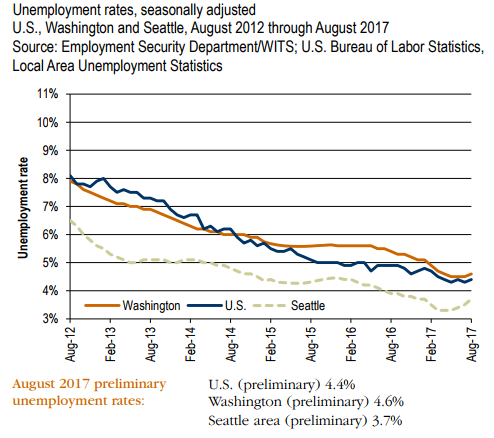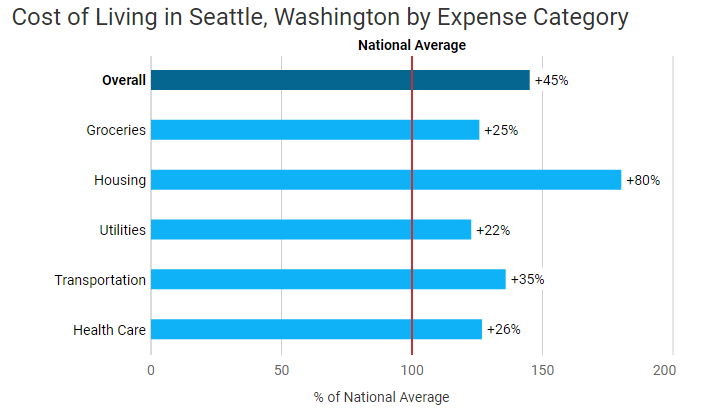Playing Hiring Hardball in Seattle’s Candidate-Driven Market

If you have been paying attention to local news, you know that Seattle has become an attractive location for job candidates due to its low unemployment rate. As seen in the graph to the right, the Bureau of Labor Statistics found that Seattle’s unemployment rate trends below both US and  Washington averages at 3.7% in the Monthly Employment Report for August 2017.
Washington averages at 3.7% in the Monthly Employment Report for August 2017.
As an employer in the Seattle area, what does this low unemployment rate mean for you and your company? It means that you are now hiring and competing for prospective employees in a candidate-driven market. In this hiring market, applicants hold substantial power and can be selective in their career moves. Your once competitive hiring practices will need to be revamped as what once worked to attract and secure the top talent in your field is no longer enough to secure the same caliber of candidate in 2017.
In order to win over the top candidates in this market, take a look at the following areas that you can improve on in your hiring practices.
Wages and Salary
Simply put, it’s time to play hardball. Lowball offers may not even warrant a counteroffer or negotiation from qualified applicants who know the market and their worth. In fact, Top Echelon (a company that offers recruiting solutions) conducted a survey that reports that the main reason job offers are declined is inadequate compensation. With almost 30% of candidates declining job offers for this reason, it is important that employers don’t hold back when they find the right individual. If you are questioning how much a candidate is worth, conduct research, find comps to support your offer, and rework your budget to accommodate a quality hire.
In Seattle specifically, employers need to offer competitive salaries to  offset the shockingly high cost of living as shown in this chart provided by PayScale.
offset the shockingly high cost of living as shown in this chart provided by PayScale.
Benefits
The importance of benefits should not be underestimated in this market. When you are preparing to extend an offer, use what you know about the applicant to create an offer that will persuade them to work for your company. Go beyond health insurance, dental and 401k, as these benefits are likely offered by other companies competing for your candidate, and highlight the intangible benefits that will appeal to them individually. If your front-runner would need to move to work for your company, offer an impressive relocation package. Did they mention a desire for a flexible work schedule? Make sure that they are aware of your company’s flextime policy. If travel is important to them, don’t forget to talk about vacation time and travel opportunities through the company.
Timing
It is imperative that you don’t keep your top candidates waiting to receive a job offer in the current market. In addition to finding that applicants are declining offers due to inadequate compensation packages, Top Echelon has also reported that 24.2% of candidates have declined a job offer based on the amount of time that elapsed between the interview and when the offer was made. In this competitive market, the top talent will not hesitate to take an attractive job offer from another company rather than wait to hear from you.
The 2016 MRINetwork Recruiter & Employer Sentiment Study found that most employers extend an offer five to six weeks after the initial interview. During this time, most promising candidates are busy interviewing (and likely accepting) offers from competing companies.
![]()

It is important to remember that while you are acquiring talent, you also need to retain the employees currently working for your company. In a candidate-driven market, top performing employees will start to look for jobs that offer a higher salary, better benefits, and advancement opportunities. While you are playing hardball in the hiring process, make sure that you are also accommodating your current valued employees.

